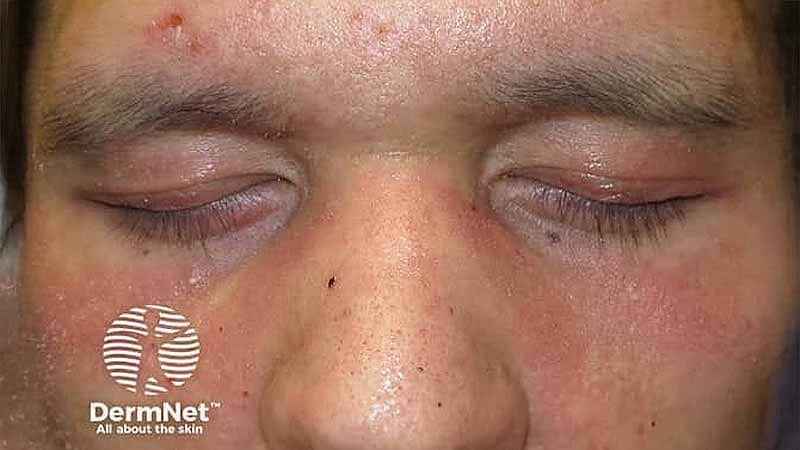TOPLINE:
Head and neck cancer (HNC) occurred in a small but distinct subgroup of patients with dermatomyositis (DM), in a retrospective study that also found that most cases presented with myositis and neck masses.
METHODOLOGY:
- To characterize patients with DM who developed HNC living in a region not endemic for Epstein-Barr virus (EBV), researchers conducted a retrospective cohort study of 590 patients with DM (76% women; 81% White individuals) using the Research Patient Data Registry at Mass General Brigham from 1979 to 2024.
- Patients had at least 3 years of clinical follow-up post-DM diagnosis.
- Researchers identified cancer-associated DM and HNC.
TAKEAWAY:
- Of the 126 patients (21%) with cancer, 6% had HNC, all were male and were predominantly White (86%). Squamous cell carcinoma comprised 86% of cases.
- Five of the tested patients with HNC were human papillomavirus (HPV)-positive. One patient from an EBV-endemic area tested positive for EBV (which has been linked to an increased risk for HNC, including nasopharyngeal carcinoma).
- Most patients with HNC (86%) had myositis at presentation, and 83% showed cancer-associated symptoms at the onset of DM, most commonly a neck mass. The mean interval from a DM diagnosis to a cancer diagnosis was 20 months.
- Lymph node involvement was present in all HNC cases, and traditional cancer screening protocols without neck imaging would have missed every case.
IN PRACTICE:
These results “underscore the importance” of the new International Myositis Assessment and Clinical Studies Group guidelines for cancer screening in patients with DM, “which include neck CT imaging for high-risk dermatomyositis patients,” the authors wrote. However, they emphasized that even if initial screenings are negative, “further evaluation should be pursued for patients with persistent symptoms and vigilance for HPV-associated HNC is critical.”
SOURCE:
The study was led by Leila Shayegan, MD, Department of Dermatology, Brigham and Women’s Hospital and Harvard Medical School, Boston. It was published online on July 13 in the Journal of the American Academy of Dermatology.
LIMITATIONS:
Limitations included the retrospective design and small sample size.
DISCLOSURES:
The authors reported no funding information or relevant conflicts of interest.
This article was created using several editorial tools, including AI, as part of the process. Human editors reviewed this content before publication.
